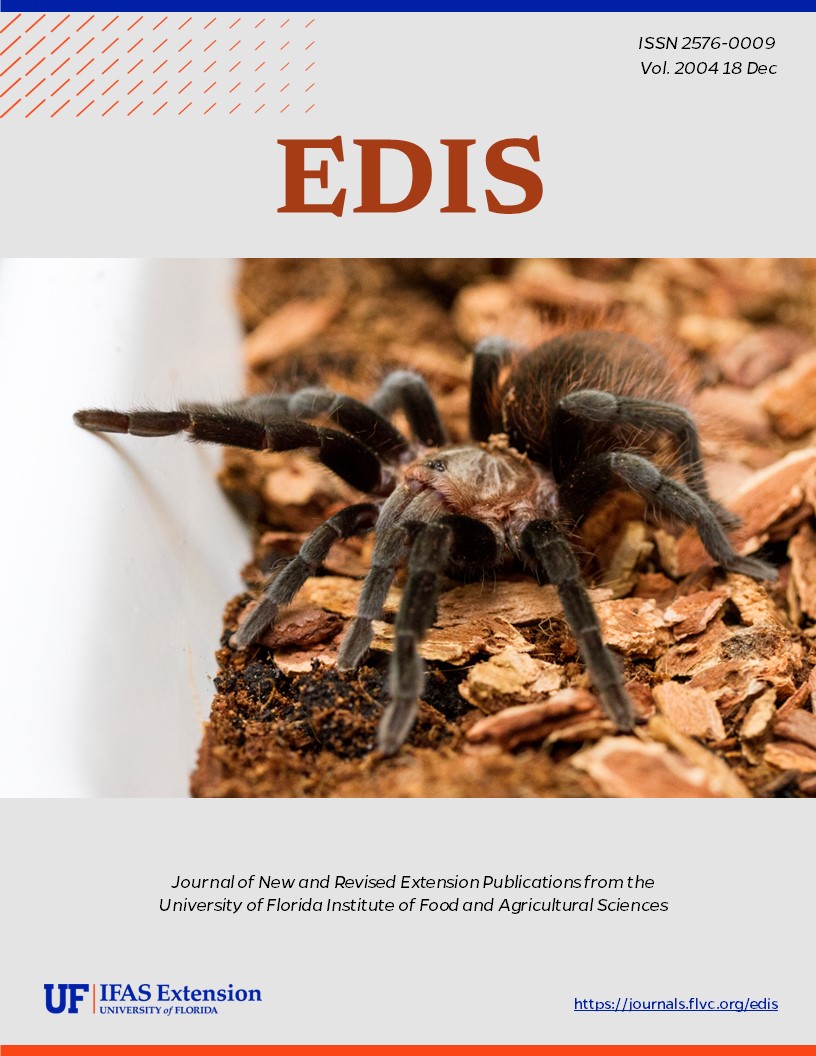Abstract
The term "powderpost beetle" is often used to describe two families: Anobiidae (deathwatch beetles) and Bostrichidae (false powderpost beetles). The true powderpost beetles, of the subfamily Lyctinae (formerly family Lyctidae) within the family Bostrichidae, earned their common name from the very fine powdery frass found in their tunnels. Eleven lyctine species have been found in the U.S. Florida has three Lyctus species and one species each in the genera Minthea and Trogoxylon (both subfamily Lyctinae). Of the three Lyctusspecies, one is an introduced seed feeder and another is rarely encountered. Only L. planicollis is common and destructive throughout the South. This document is EENY-283, one of a series of Featured Creatures from the Entomology and Nematology Department, Florida Cooperative Extension Service, Institute of Food and Agricultural Sciences, University of Florida. Published: March 2003.
References
Bennett GW. (July 2001). Powderpost beetles. Purdue University Cooperative Extension Service, E-73. http://www.entm.purdue.edu/Entomology/ext/targets/e-series/EseriesPDF/E-73.pdf (18 December 2002).
DeAngelis J. (July 1995). Preventing and controlling powderpost beetles in and around the home. Pacific Northwest Extension, Oregon State University, PNW 326. http://eesc.orst.edu/agcomwebfile/edmat/html/pnw/pnw326/pnw326.html (18 December 2002).
Dillon ES, Dillon LS. 1972. A Manual of Common Beetles of Eastern North America, Volume 2. New York: Dover Publications, 894 pp.
Ebeling W. 1975. Urban Entomology. Berkeley: University of California Press, 695 pp.
Hickin NJ. 1972. The Woodworm Problem. London: Hutchinson Benham Ltd., 123 pp.
Ivie MA. 2002. Bostrichidae. In American Beetles; Arnett RH Jr, Thomas MC, Skelley PE, Frank JH (eds.) Boca Raton: CRC Press.
Koehler PG. (May 1999). Powderpost beetles and other wood-destroying insects. Florida Cooperative Extension Service, Institute of Food and Agricultural Sciences, University of Florida, ENY-266. http://edis.ifas.ufl.edu/IG119 (18 December 2002).
Merchant M. (September 2001). Lyctid powderpost beetles: Suggestions for control. House & Landscape Pest Series, Department of Entomology, Texas A&M University, Ent-1022. http://dallas.tamu.edu/insects/Ent-1022.html (18 December 2002).
Papp CS. 1984. Introduction to North American Beetles. Sacramento, Calif.: Entomography Publications, 335 pp.
Rust MK, Paine EO, and Reierson DA. 1997. Evaluation of Freezing to Control Wood-Destroying Insects (Isoptera, Coleoptera). Journal of Economic Entomology 90: 1215-1221. https://doi.org/10.1093/jee/90.5.1215
White RE. 1983. A Field Guide to the Beetles of North America. Boston: Houghton Mifflin. 368 pp.
Williams LH. 1985. Integrated protection against lyctid beetle infestations. U.S. Dept. of Agriculture, Forest Service, Forest Experiment Station. 12 pp.
Wilson SE. 1932. Powderpost beetles. Nature 130: 22-23. https://doi.org/10.1038/130022b0
Unless otherwise specified, articles published in the EDIS journal after January 1, 2024 are licensed under a Creative Commons Attribution-NonCommercial-NoDerivs 4.0 International (CC BY-NC-ND 4.0) license.

